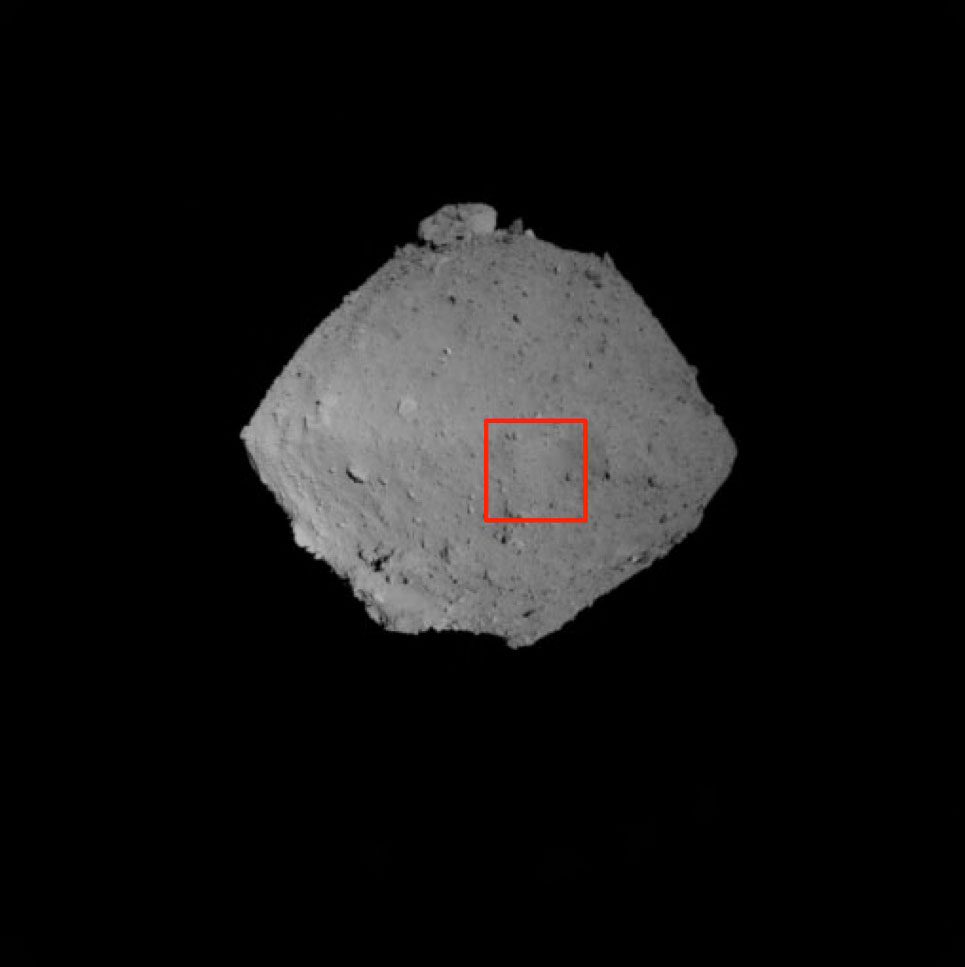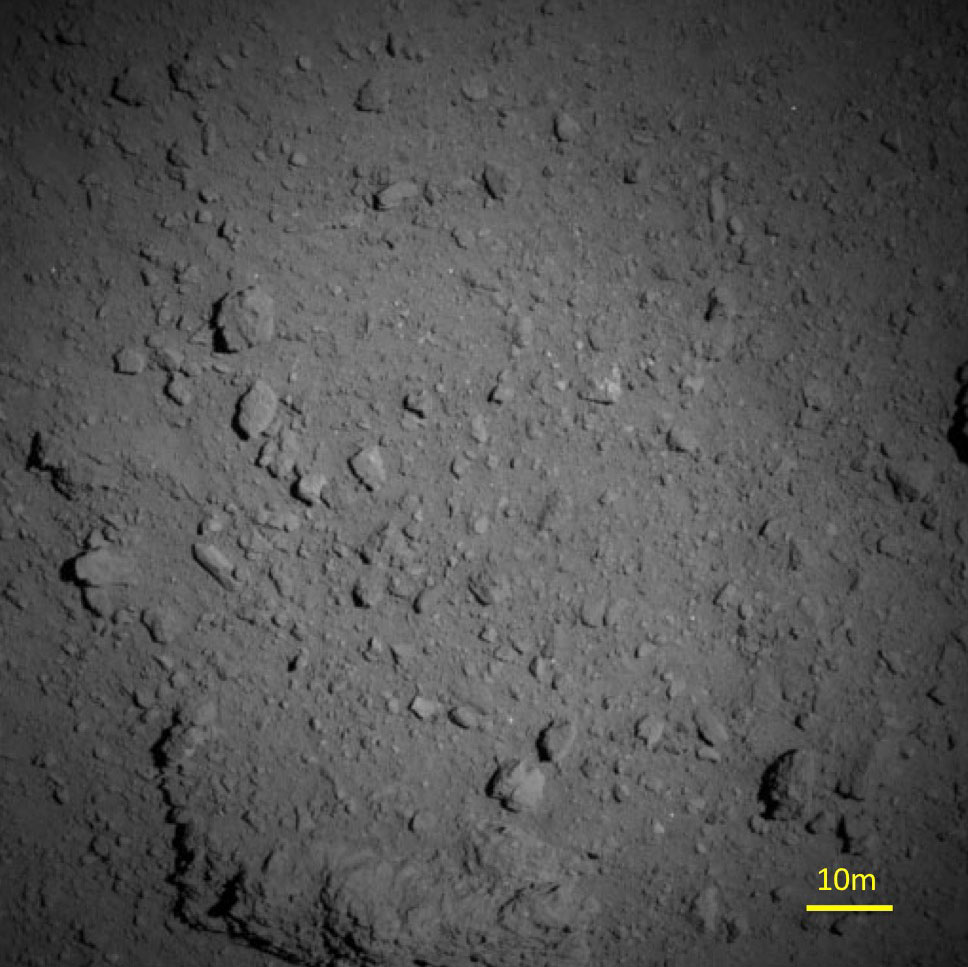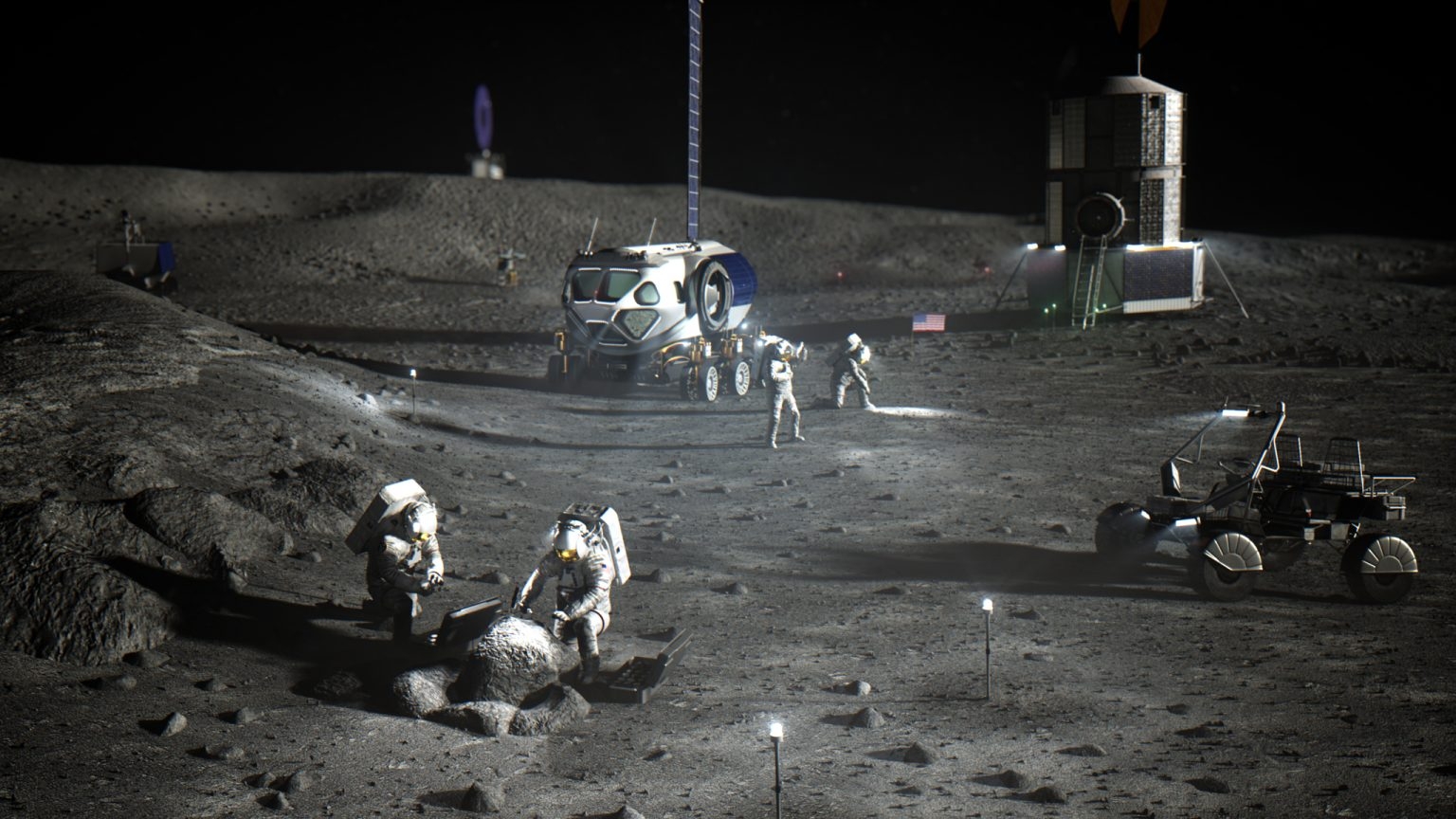Space Rock in the Crosshairs! Japanese Probe Snaps Close-Up Images of Asteroid Ryugu

A Japanese sample-return spacecraft just gave its destination asteroid a special close-up. As Hayabusa2 swept to only 1 kilometer (0.6 miles) above the surface of 162173 Ryugu, it spotted boulders, dust and surface features only a few meters or feet across. It's by far the best view of Ryugu since the spacecraft arrived there about six weeks ago.
Several images from Ryugu show the surface of this space rock, which occasionally crosses the orbit of Earth, as it dipped down toward the asteroid. (Scientists classify Ryugu as a potentially hazardous asteroid, but there is no imminent threat to our planet.) In general, studying the surface of small worlds helps scientists better understand solar system history. Engineers can also use the composition information so that, if Earth is threatened by a large asteroid, they can better pick a deflection or destruction method.
This time around, though, the pictures were not the main reason Hayabusa2 swept so low. Instead, Japanese controllers were interested in better understanding the gravity of Ryugu. To do so, they put the spacecraft into a temporary free fall.
"By monitoring the exact movement of the Hayabusa2, we can see how strong the gravitational attraction is from Ryugu," officials with the Japan Aerospace Exploration Agency (JAXA) said in a statement today (Aug. 7).
The spacecraft started its descent at 10 p.m. EDT on Aug. 5 (0200 GMT on Aug. 6). From an altitude of 12.5 miles (20 kilometers), Hayabusa2 spent the next 21 hours in free fall, getting within 2,792 feet (851 meters) of the space rock, JAXA officials said. The spacecraft also took several images shortly before reaching that minimum altitude. Then, Hayabusa2 fired its thrusters and climbed back up again to a target altitude of about 3.1 miles (5 km).
These maneuvers will also be valuable practice for spacecraft controllers as they prepare to bring Hayabusa2 down for a sample return. The spacecraft is expected to scoop up a bit of Ryugu's regolith (soil) before scooting back to Earth in 2020. In the coming months, Hayabusa2 will also drop off a lander and three rovers to explore Ryugu's surface.
Hayabusa2, which launched in 2014, is the second sample-return mission Japan launched to an asteroid. The first spacecraft, Hayabusa, overcame numerous technical difficulties on its mission and safely returned bits of 25143 Itokawa in 2010.
Breaking space news, the latest updates on rocket launches, skywatching events and more!
Follow us @Spacedotcom, Facebook and Google+. Original article on Space.com.

Elizabeth Howell (she/her), Ph.D., was a staff writer in the spaceflight channel between 2022 and 2024 specializing in Canadian space news. She was contributing writer for Space.com for 10 years from 2012 to 2024. Elizabeth's reporting includes multiple exclusives with the White House, leading world coverage about a lost-and-found space tomato on the International Space Station, witnessing five human spaceflight launches on two continents, flying parabolic, working inside a spacesuit, and participating in a simulated Mars mission. Her latest book, "Why Am I Taller?" (ECW Press, 2022) is co-written with astronaut Dave Williams.

